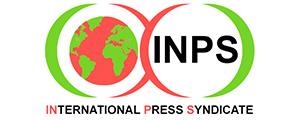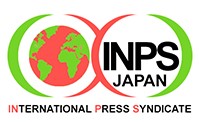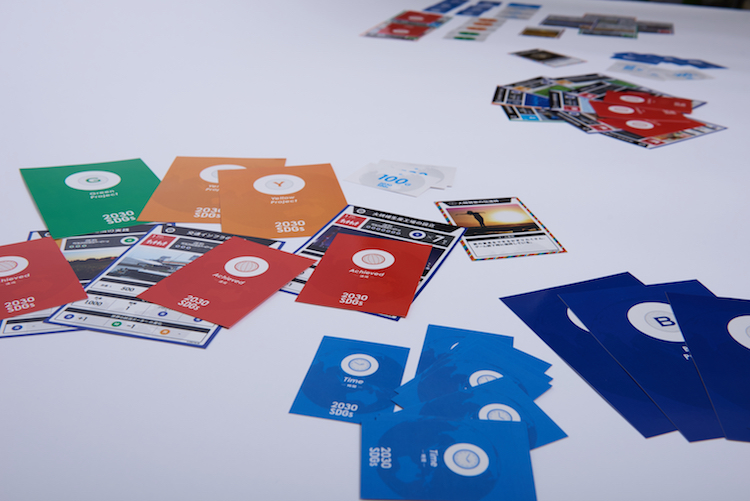By Ramesh Jaura and Katsuhiro Asagiri
BERLIN | TOKYO (IDN) – Reports have it that when Albert Einstein was some five years old and confined to bed, his father gave him a magnetic pocket compass to play with. He twisted and turned it, wondering how the needle always knew to point towards the north.
Takeo Inamura and Nobuhide Fukui share a similarly profound curiosity about how the 17 Sustainable Development Goals (SDGs) of the 2030 Agenda for Sustainable Development, world leaders adopted in September 2015 at an historic UN Summit in New York, could really transform the world. (P12) CHINESE | INDONESIAN | JAPANESE TEXT VERSION PDF | KOREAN | SPANISH
And, what could be done to bring home to the common man and woman that there is no magic wand to realize the grand vision of SDGs, to end all forms of poverty, fight inequalities and tackle climate change, while ensuring that no one is left behind?
They felt a strong conviction that a simple game to explain the logic behind the 17 Goals and encourage individual and community commitment would generate vital impulses to set the ball rolling. They put their heads together and developed under the umbrella of Japanese NGO Imacocollabo, the 2030 SDGs Game, Inamura tells IDN.
‘Imacocollabo’ consists of the three words: ‘ima’, ‘coco’, and ‘collabo’. Ima means ‘now’, Coco means ‘here’, and Collabo refers to ‘collaboration’. Accordingly, the company’s motto is: “We all need to act – not sometime, but right now. Not from somewhere, but from right where we are. And to have impact, we need to act in collaboration with others.”
Inamura is together with Muranaka co-founder of Imacocollabo; Inamura and Fukui are co-developers; Fukui being a professional card developer.
The rules of the Game are simple. A player uses money and time with the intent to achieve a goal by the end of the game in a ‘yellow’, ‘blue’ or ‘green’ project. Each project is targeted at people in the real world with different interests and values.
A Fortune Seeker, for example, for whom money matters most, would need 1200 units of wealth at the end of the game. Because only “a sufficiently abundant world” would allow the Fortune Seeker to avail of “the wealth earned”.
One who believes in Living in Comfort and Leisure must have 15 units of time at the end of game to have a sufficient abundance to enjoy the time earned. An Environmental Conservation Warrior needs to have more than 10 Green Intentions at the end of the game – to live in a world that feels worth living in.
“The 2030 SDGs Game is a game that takes you on an experiential journey to discover how the world can achieve these 17 powerful goals between now and 2030,” says Muranaka
Through the game play and reflection, players not only discover what ‘sustainable development’ is all about, but also find the critical factors for social transformation through personal and community experience.
The Game approach has three objectives. One of these is to give people a direct experience of participating in co-creating a sustainable world (“I can do it”; “what I do makes a difference”)
It simplifies and makes accessible an extremely complex issue to a level that allows people to begin to understand, while stimulating natural curiosity to learn more.
Furthermore, it activates players’ natural instincts to set their aim toward a worthy goal, simultaneously building confidence and making it enjoyable, while inspiring and motivating players to take action in the real world.
2030 SDGs is a multiplayer, in-person, card-based game that simulates taking the “real world” into the year 2030. It is designed to be played with from 5 to 50 players. That number can be expanded to a maximum of around 200 with multiple parallel ‘worlds’ operating at the same time.
Playtime is approximately one hour; with the necessary explanation and reflection afterward, it requires a minimum of 90 minutes, and generally works best in a two-and-half hour time frame.
In Japan, more than 200 accredited facilitators host the Game, and many game events are held all over Japan in corporate, governmental, educational, and community settings with the intention to transform the consciousness of each participant in profound ways, in turn transforming their actions.
The ‘2030 SDGs experience’ has become a powerful social phenomenon in Japan, earning extensive media coverage and reaching more than 12,000 participants in 2017, Muranaka tells IDN.
“Now, due to a growing demand to bring the game to the rest of the world, we have created an English edition and are beginning to introduce it to a wider audience overseas,” he adds.
Inamura recalls that to begin with, he wanted to play the 2030 SDGs Game with 10 to 15 of his friends, and he shared the event information on Facebook. “Surprisingly I instantly had more than 800 likes, and many of them were friends of friends.” He was overwhelmed.
The first game was well received and some of the 20 participants suggested inviting their respective communities to play. “From there on, every time I played the game, 2-3 participants would ask me to play it with their respective communities. Subsequently, the game spread out swiftly.”
Inamura continues: “We have had many requests from people who want to ‘buy the game’. We have, therefore, given much thought to options such as simply selling the game kits, providing the cards essentially free of charge and raising money through crowd funding.”
But unlike many of the publicly available card games or board games, which have clear rules that guarantees certain quality regardless of the navigation skills, 2030 SDGs is essentially a simulation game with unlimited variety of scenarios, depending on the decisions, actions or involvement of the players. Thus, if the facilitator lacks the appropriate skill set, the game may drift away from the original purpose, or it sometimes does not work out at all.
“We decided to have a facilitator training course so that people can facilitate the game by themselves. Meanwhile, we have more than 200 certified facilitators in Japan and they play the game all over the country.
“The more a facilitator can bridge the Game world and the Real one, the greater is the power of the game to attract people and encourage them share their experiences with others,” says Muranaka.
A wide range of people – from age 10 to age 80 – can play the game. It is played primarily in schools as well as elder care homes. But the best match is from junior high school to adults.
“In the English-speaking world, the Game’s acceptance is as large as it was in the beginning in Japan. In fact, we will be travelling to the U.S. in October and Europe in November.” [IDN-InDepthNews – 23 August 2018]
Image: 2030 SDGs Game. Credit: Imacocollabo


